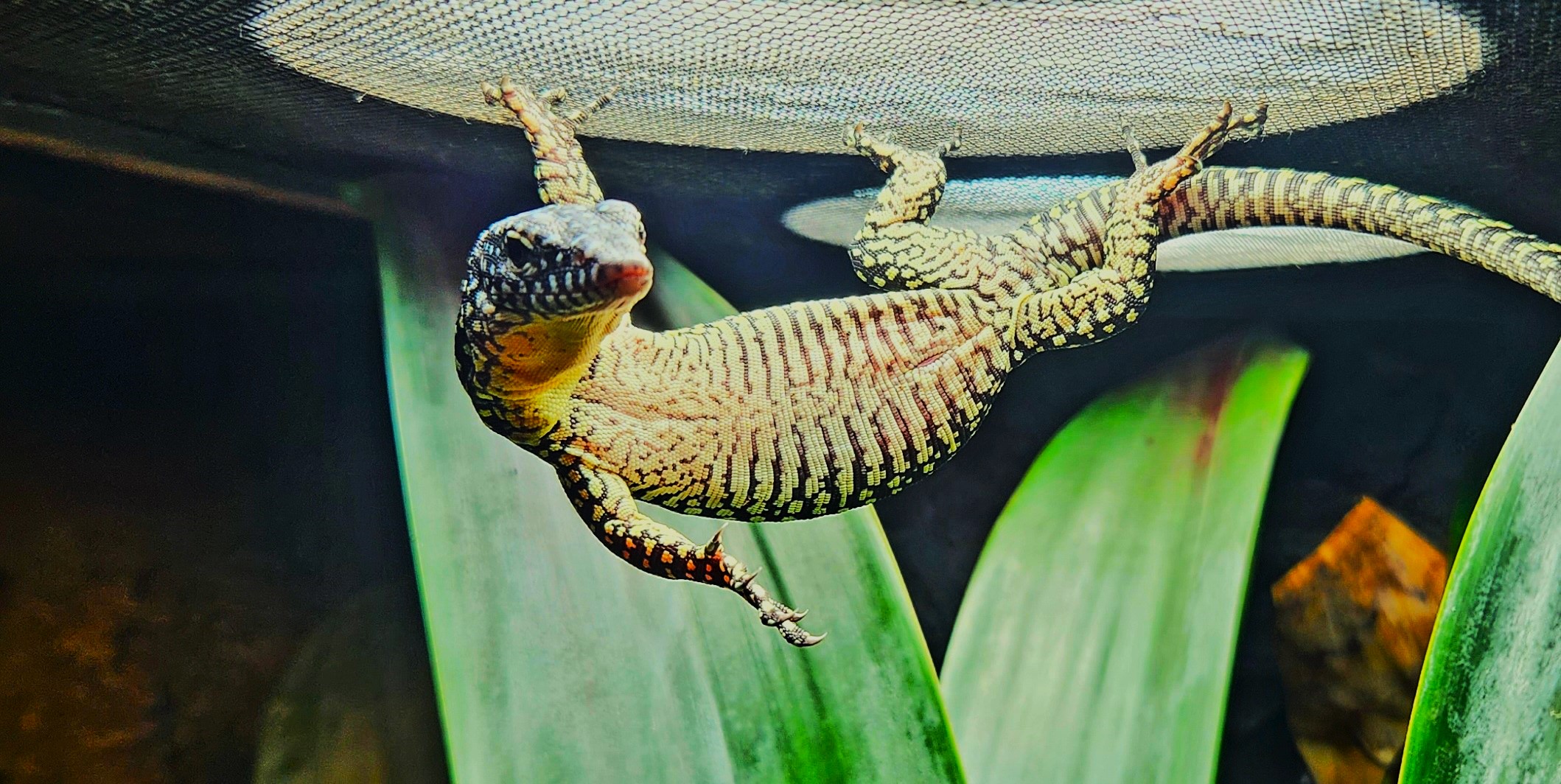Reptile Spotlight: All You Need to Know About the Mangrove Monitor
The Mangrove Monitor, also known as Mangrove Goanna (Varanus indicus), is a species of monitor lizard. This keystone species forms an important part of the foodweb of ecosystems, and adapts to various habitats like saltwater and freshwater swamps, mudflats, and mangrove forests. They can grow up to 1.3 metres and live for around 10 to 12 years in the wild, though in captivity this could be up to 20 years.
Read along to learn more!
Some questions on the Mangrove Monitor
Where are Mangrove Monitors found?
Mangrove Monitors are found in coastal mangrove forests and swamps in Northern Australia, New Guinea, Marshall Island, and the Solomon Islands. They are also found in Malaysia, Thailand, and Indonesia.
What do Mangrove Monitors eat?
Mangrove Monitors are carnivorous and feed on a wide range of prey, including small mammals, birds, reptiles, amphibians, fish, insects, and crustaceans.
Are Mangrove Monitors facing any threats?
Yes, Mangrove Monitor lizards face various threats. These animals are native to the coastlines of Australia, and their natural habitats are being threatened by coastal development and pollution.
The destruction of their habitats can lead to decreased food and their ability to reproduce. Additionally, they are often hunted for their meat and skins, which are used in leather goods. As their populations decline, they also face an increased risk of extinction.
The many quirks of the Mangrove Monitor
They are vocal
The Mangrove Monitor is known for being quite vocal, making loud noises and even growling at night. This is one of their unique behaviours observed in the wild. It is believed that their vocalisations are used for communication and territorial displays.
Climbing
Mangrove Monitors are excellent climbers and can often be seen scaling trees and other objects. They use their sharp claws to cling to surfaces, making them quite nimble.
Digging
These lizards dig burrows and tunnels in the ground to hide from predators. They also use these burrows as a refuge from the heat of the day and extreme weather conditions.
Sun bathing
The Mangrove Monitor is known to enjoy basking in the sun. This species can often be seen lying on branches and logs to absorb the heat from the sun’s rays.
Swimming
The Mangrove Monitor is known to be an excellent swimmer. They usually use their long tails to propel them through the water to find food and avoid predators.
The importance of Mangrove Monitors in the ecosystem
Mangrove monitors are ecologically important and provide many benefits to the ecosystem.
They are important predators
Mangrove Monitors are important predators in the mangrove ecosystem. They feed on a wide range of prey, including small birds, crabs, fish, mammals, and reptiles. They also help to control the population of these prey species and keep them in balance.
They help in nutrient cycling
Mangrove Monitors consume a variety of prey, including insects, crustaceans, fish, and small reptiles. This helps to cycle nutrients through the ecosystem. The animals that the monitors eat contain nutrients that are returned to the mangrove ecosystem when they digest and excrete them.
They help in seed dispersal
Mangrove monitors also help disperse seeds throughout the mangrove ecosystem by carrying them on their bodies and in their faeces. This helps to disperse seeds to new areas where they can grow and help to increase the biodiversity of the mangrove ecosystem.
They provide important habitats
Mangrove Monitors also provide important habitats for other animals in the mangrove ecosystem. They create burrows in the mud and sand, which provide a refuge for smaller animals, such as crabs and insects.
Wrap Up
Mangrove Monitors are a fascinating species and are an essential part of the mangrove ecosystems. They play a vital role in maintaining balance in these areas and are an integral part of the food chain. As such, these animals should be protected, and their habitats should be preserved.
Visit Reptile Encounters to experience the awe of the majestic Mangrove Monitor



